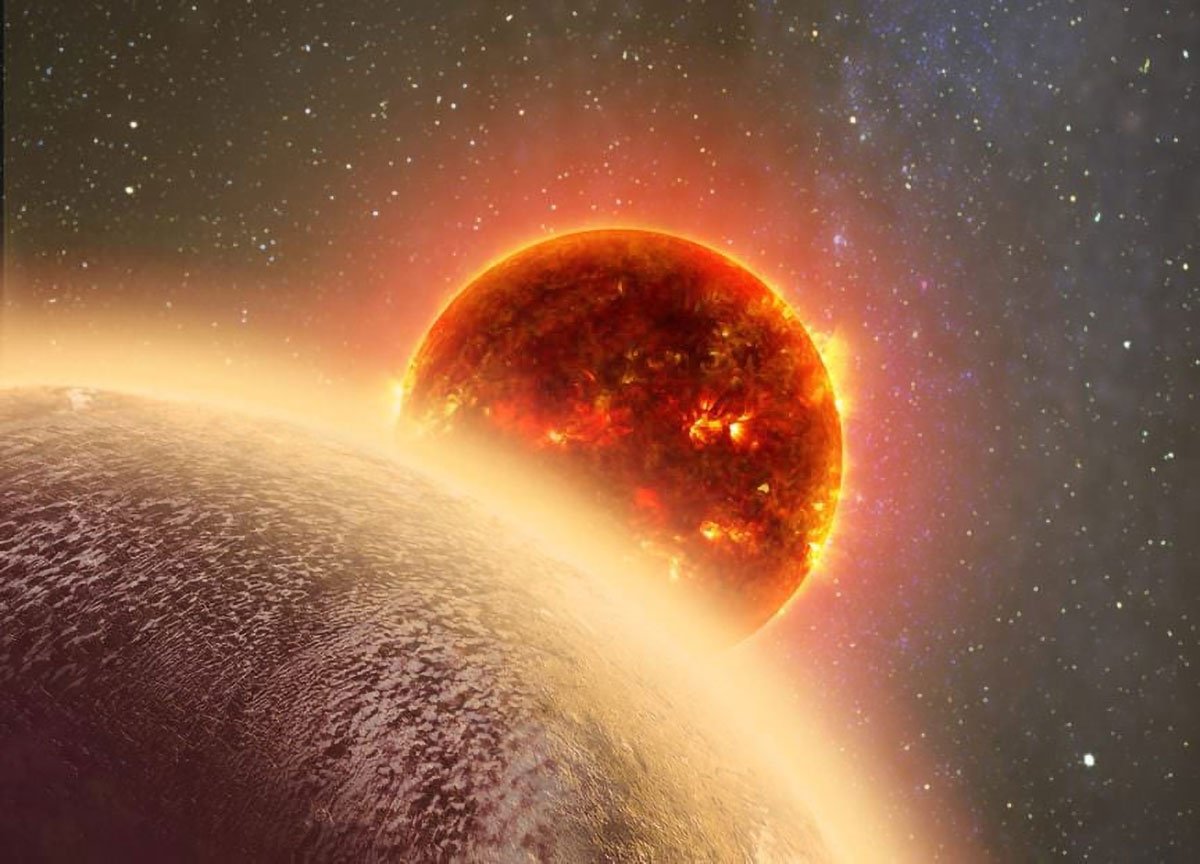Earth-Like Planet GJ 1132 B Has No Atmosphere

JWST confirms GJ 1132 b lacks an atmosphere. This challenges the habitability of planets around M-dwarfs.
Astronomers often encounter conflicting results when investigating cosmic questions. This is a normal aspect of the scientific method, as it highlights the need for more data to confirm or reject a hypothesis.
A prominent example in exoplanet research involves GJ 1132 b, where different observations alternately suggested the planet had an atmosphere or none at all. Using extended observation time with the James Webb Space Telescope (JWST), researchers now report that GJ 1132 b almost certainly lacks an atmosphere, a conclusion that carries broader consequences for the study of exoplanets.
A rocky world under scrutiny
GJ 1132 b orbits a nearby M-dwarf star about 41 light-years away. The planet has drawn significant attention because it is both similar to Earth in some respects and entirely alien in others. It is rocky, with a radius and mass only slightly greater than Earth’s. Yet it lies just 0.0153 AU from its host star and completes an orbit in only 1.6 days. Given its close proximity, it seems unlikely that the planet could retain an atmosphere, although some theoretical models suggest that even worlds so near to M-dwarfs might be able to hold on to one.
The question matters because M-dwarfs are highly active stars, emitting strong radiation and frequent flares that can strip atmospheres away. To address this, astronomers have developed the concept of a “cosmic shoreline,” which describes the threshold of stellar irradiation and planetary size beyond which a planet can no longer maintain an atmosphere.
Artist’s impression of GJ 1132 b – which now should be updated given its definitive lack of atmosphere. Credit: NASA/JPL-Caltech/Robert Hurt
This new study directly engages with that debate and builds on earlier work. Previous JWST observations of two planetary transits produced conflicting results: one indicated a water-rich atmosphere, while the other suggested no atmosphere at all. By analyzing two additional transits, the researchers found that the evidence overwhelmingly supports the conclusion that GJ 1132 b is most likely airless.
Considering a thin steam layer
There is still room in the data for the possibility of a very low pressure (around 1 mbar) “steam” atmosphere, but most astronomers think that is not possible for this particular planet, given the proximity to its star and its seeming lack of water, which was noted in previous JWST studies. Importantly, even that possibility goes away almost completely if the first data set (i.e. the one pointing to a water atmosphere) isn’t used in the analysis – meaning three other data sets agree that GJ 1132 b doesn’t have an atmosphere.
Fraser discusses exoplanet atmospheres with Dr. Joanna Barstow
Once they realized that, the authors went back to look at what might have made the first data set so out of line with the other three. When looking at the star itself, it became clear that there were more “cool spots” on the star’s surface than during the other three transits, which influenced the data collected about the planet itself. The authors believe that might have been what made it look like the planet had an atmosphere in one dataset, when it really didn’t. As part of this finding, the authors suggest using a “leave-one-out” approach for exoplanet datasets when more than one is available, especially if the star is highly variable.
Methods and JWST instrumentation
Another important feature of this paper is the methods used to collect the data. It used two different viewing modes of the NIRSpec instrument onboard JWST – G395H and G395M. G395H is higher resolution, whereas the G395M viewing mode is “medium” resolution. The trade-off is that the G395H mode has a “gap” in its data between 3.75um and 3.82 um, which could influence the data. However, the authors found this wasn’t a problem, with the noise comparable between the two modes. Their recommendation is to use the medium resolution mode if only capturing one exoplanet transit, but it’s probably safe to just use the high resolution mode if allotted time for more than one.
Ultimately, this paper pretty clearly puts to rest the idea that GJ 1132 b has an atmosphere – especially any sort of thick one. It also offers solutions for making sure the kind of confusion that happened for this particular planet doesn’t happen again in other studies of exoplanet atmospheres. But perhaps most importantly, it is another data point in the ongoing debate about whether planets around M-dwarf stars can hold on to their atmospheres – and it appears to firmly support the idea that they can’t.
Reference: “Additional JWST/NIRSpec Transits of the Rocky M Dwarf Exoplanet GJ 1132 b Reveal a Featureless Spectrum” by Katherine A. Bennett, Ryan J. MacDonald, Sarah Peacock, Junellie Perez, E. M. May, Sarah E. Moran, Lili Alderson, Jacob Lustig-Yaeger, Hannah R. Wakeford, David K. Sing, Kevin B. Stevenson, Natasha E. Batalha, Mercedes López-Morales, Munazza K. Alam, Joshua D. Lothringer, Guangwei Fu, James Kirk, Jeff A. Valenti, L. C. Mayorga and Kristin S. Sotzen, 9 September 2025, The Astronomical Journal.
DOI: 10.3847/1538-3881/adf198
Adapted from an article originally published on Universe Today.
Never miss a breakthrough: Join the SciTechDaily newsletter.
Source link

